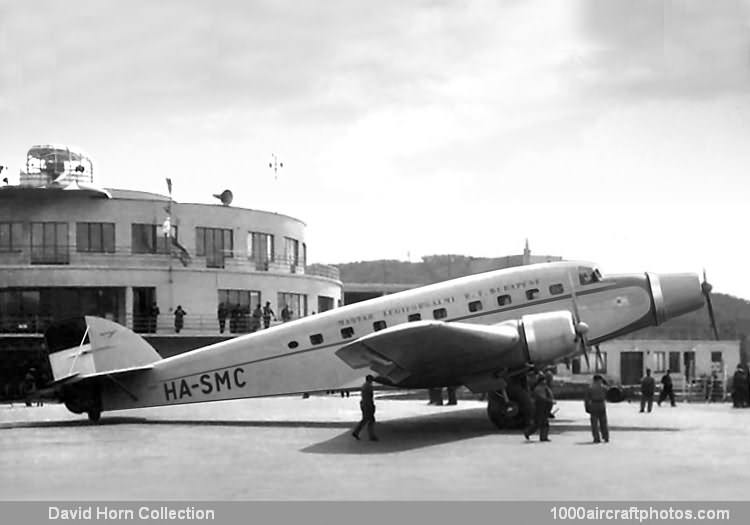The SM.75 was a considerably larger aircraft, and was the first Savoia-Marchetti tri-motor to have a retractable main landing gear. There was apparently no separate prototype, the first flight on November 6, 1937 probably being made by the first production SM.75 (I-TACO). This and at least 29 more SM.75s were delivered to Ala Littoria, with whom they entered service in 1938.
Standard power plant was three 750 hp Alfa Romeo 126 RC 34 radial engines, although one example (in 1942) is known to have been fitted with 860 hp Alfa Romeo 128s and the five SM.75s delivered to the Hungarian airline Malert (acronym for Magyar Légiforgalmi RT, Hungarian Air Traffic Ltd.) were powered by Gnome & Rhône K14 engines. One SM.75 was delivered to the Regia Aeronautica, and at least nine others were built whose ownership is uncertain; some of these may also have gone to Ala Littoria.
The SM.75 carried a flight crew of three and a steward, and had standard three-abreast seating for 24 passengers in two twelve-seat cabins separated by a refreshments bar. Passenger capacity could be increased to thirty. Aft of the rear cabin were a toilet and a baggage/freight compartment, with additional baggage space under the floor of the rear cabin. A smaller compartment was located beneath the front of the forward cabin, ahead of the wing leading edge.
On January 9, 1939 an SM.75, piloted by N. Prota and G. Bertocco, set up international speed records of 207 mph (333 kmh) and 205 mph (330 kmh) over 621 mls (1,000 km) and 1,243 mls (2,000 km) closed circuits while carrying a 22,046 lb (10,000 kg) payload. About a dozen of the Ala Littoria aircraft were impressed for military service when Italy entered WW II, the five Hungarian were impressed into the Hungarian AF. A modified version known as the SM.75bis was built specifically as a military transport, while a twin-float derivative, the SM.87, appeared in 1943."
The following data relate to the Alfa Romeo-powered version.
